Use of sodium metabisulfite, alternatives
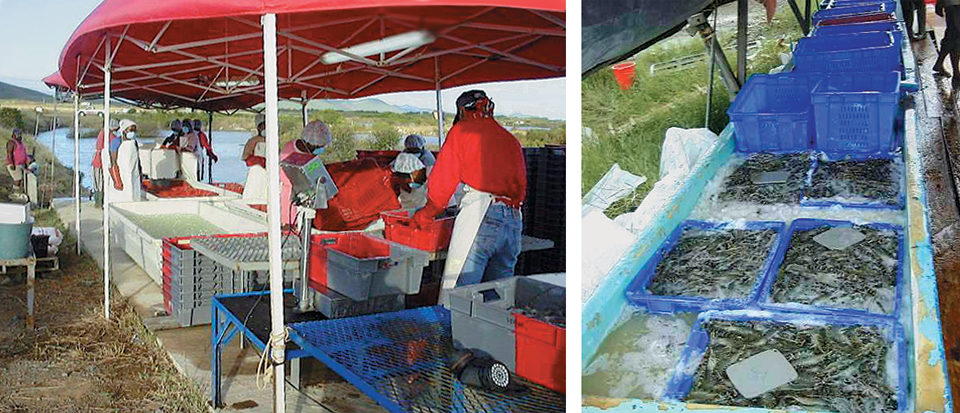
The black spots of melanosis are a common phenomenon that can be observed in fruit and vegetables, as well as seafood. Melanosis occurs in all crustaceans and is the result of a natural biomechanism that should not be considered an indicator of inadequate postharvest treatment.
Melanosis has no impact on the flavor of shrimp and is not harmful to consumers. However, the black spots can drastically affect consumer acceptability of the products and significantly diminish their market value.
Bioreactions
In shrimp, the black spots initially appear mainly on the cephalothorax, appendices and inter-segment membranes. This is why melanosis is usually more severe in head-on shrimp products. After removing the heads for headless, shell-on shrimp, care should be taken to thoroughly wash the tails to eliminate the proteases that could promote melanosis.
Two biomechanisms in postmortem shrimp result in the onset of melanosis. One does not require enzymes, and in the other, the enzyme tyrosinase is the principal factor.
Enzymatic activity shows important variations during the intermolt cycle, but the main role of polyphenol oxidase in the crustacean life cycle is probably related to hardening the shell in the intermolt cycle. The highest level of polyphenol oxidase occurs during stages C and D of the intermolt cycle. When considering the texture of the shell, the most suitable stages to harvest the shrimp are stages C and early D.
Stress can also initiate melanosis in shrimp, whether directly influenced by the general health of the animals or wounds inflicted during harvesting. The mechanism of wound healing in shrimp produces compounds as a result of the polymerization of quinine, which exhibits both antibacterial and antifungal activities. Nevertheless, the enzyme that induces this tanning effect does not interfere in postmortem processing.
Melanosis factors
- Key factors in the development of melanosis are:
- The enzyme tyrosinase, whose action on tyrosine is inhibited at a pH of 3, a degree of acidity that would denature the flesh of shrimp.
- Oxygen, which acts directly on all oxidation reactions.
- The presence of one or more suitable substrates, such as tyrosine, DOPA, and others.
- The influence of such external biotic factors as molting stage and species, and abiotic factors like temperature and wounds. Low temperature slows down enzymatic reactions, but may not stop them. Nevertheless, it is one of the aspects that makes early cooling of shrimp after harvesting so important.
Postharvest control
The harvesting process must be carried out as gently as possible to avoid wounding the animals. After harvesting, the main problem is to avoid the onset of melanosis for as long as possible. Many techniques can prevent it, including refrigeration, freezing, heating, dehydration, irradiation, or the use of inhibitors. Any such techniques must not cause toxicity or affect the aspect, texture, taste, or flavor of the shrimp.
None of the acceptable processing techniques are totally efficient at controlling melanosis. It is obvious that good harvest practices with strict control of the “cold chain” is a basic key.
With certain combinations of temperature and stress, melanosis can appear in shrimp within a few minutes after harvesting. It is therefore very important to avoid it, because once melanosis starts, it is irreversible. With adequate processing techniques, however, it is possible to slow down or temporarily stop the phenomenon.
Freezing at minus-18 degrees-C does not destroy the melanosis enzymes, but stops their activity. Once the product warms, they are reactivated. Even freezing has an insidious effect. When a product is defrosted, the bacteria that colonize it can develop very quickly into a bacterial bloom that could be a factor in the onset of melanosis.
To be efficient, cooking must be destructive. In most cases, shrimp are cooked in a 95 degrees-C bath for three to four minutes, depending on size. Experiments have shown that to be efficient, cooking should be at higher temperatures and for a longer time, which severely affects the texture and taste of shrimp and would not be acceptable to consumers.

Inhibitors
Currently, inhibitors are the most widely used method to control melanosis (Table 1). As mentioned above, two bioreactions produce melanosis in dead shrimp. The first is under enzymatic control, and the second depends mostly on the substrates. Therefore, inhibitors must intervene at the enzymatic level, and more specifically on the substrate or the intermediate reactions involved in the phenomenon.
From 1952 to 1970, professional shrimp cookers in France used boric acid to control melanosis, but this additive was prohibited in October 1970. Benzoic acid was also showed to be ineffective in preventing melanosis. Currently, the most used antioxidant is sodium metabisulfite. Sulfites in various forms have been used in foodstuffs for centuries, and sodium metabisulfite has been used to control blackening of foods like wine and tomatoes since the 1950s.
In the case of shrimp, many attempts have been made to replace sodium metabisulfite, but without success. Metabisulfite acts with the intermediate reaction elements of melanosis, in particular quinone and sulfaquinone, by reducing the oxygen available for oxidation reactions.
Prevention key
The use of sodium metabisulfite after shrimp harvesting must be done before postmortem mechanisms lead to the appearance of melanosis. Once the mechanisms start, they can, at best, only be slowed down. To avoid a spectacular peak of melanosis at the time of defrosting, the sodium metabisulfite should be used immediately after harvesting and cooling the shrimp.
The postharvest treatment consists of dipping the shrimp immediately after harvest in two successive baths: first in clean, chilled water and then in a chilled metabisulfite solution. Depending on shrimp size, the concentration of metabisulfite can vary 6 to 15 percent.
The main problem with this method is maintaining a constant concentration of metabisulfite in the second bath. Part of the initial metabisulfite is absorbed by the shrimp, but the main factor of variation is the dilution by the addition of ice. It is therefore very important to define a method of reinforcement that ensures the efficiency of treatment throughout the harvesting process.
To reinforce the bath, technicians usually just add more metabisulfite powder. This method is not very efficient because metabisulfite powder is not easy to dissolve in chilled water, and a large portion will ineffectively fall to the bottom of the tank.
A few years ago, a team from IFREMER, a French governmental research institute, developed a machine that sprayed shrimp with a solution of chilled water and acidic liquid sodium bisulfite. The result was considered effective, but the negative effects of the sulfite vapor did not permit development to industrial use.
Treatment effects fade
Over time, the effect of residual sodium metabisulfite in tissues decreases to a point at which the melnosis mechanism begins again. It is thus advisable to apply treatments strong enough to produce a sufficiently durable effect, but not exceed the authorized residual rate of sulfite in shrimp flesh.
Sulfites are not considered toxic substances, but are very irritant and can cause health problems for some consumers, especially people suffering from asthma or deficiencies of sulfite oxidase. As with any additives used in processing, product labels must mention clearly that the product contains metabisulfite.
Standards concerning the authorized maximum rates are precise, but vary from one market to another. The United States and Japan accept a maximum of 100 ppm sodium metabisulfite residue in shrimp flesh, while in the European Union, the rate varies according to the size of shrimp (Table 2). Using designated control methods, levels must be measured using tail flesh that excludes the shell or head.
Sulfite alternative
For several years, there has been considerable interest in identifying appropriate sulfite substitutes for metabisulfite in food. To date, most research teams have only identified the compound 4-hexylresorcinol, a derivate of resorcinol, as a potential substitute.
Several derivates of resorcinol are industrially used today to control browning in vegetables such as potatoes. Used for more than 40 years in cosmetics and pharmacology without problems, 4-hexylresorcinol maintains a GRAS (generally regarded as safe) status.
Two commercial products contain 4-hexylresorcinol. In the European Union, 4-hexylresorcinol was temporarily included in the list of authorized additives for seafood processing. Unfortunately, no official agency followed up, so the compound is currently not authorized in the E.U.
(Editor’s Note: This article was originally published in the October 2005 print edition of the Global Aquaculture Advocate.)
Now that you've reached the end of the article ...
… please consider supporting GSA’s mission to advance responsible seafood practices through education, advocacy and third-party assurances. The Advocate aims to document the evolution of responsible seafood practices and share the expansive knowledge of our vast network of contributors.
By becoming a Global Seafood Alliance member, you’re ensuring that all of the pre-competitive work we do through member benefits, resources and events can continue. Individual membership costs just $50 a year.
Not a GSA member? Join us.
Author
Tagged With
Related Posts
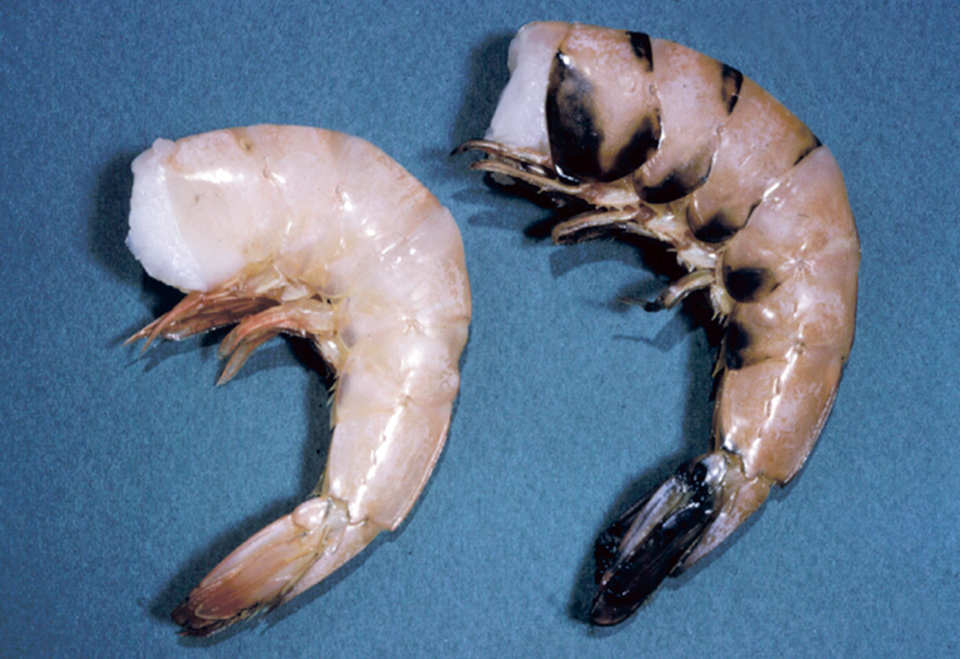
Intelligence
4-hexylresorcinol: sulfite-free control for melanosis in crustaceans
4-hexylresorcinol in a nonsulfite processing treatment against melanosis in crustaceans inhibits natural enzymes for shell hardening.
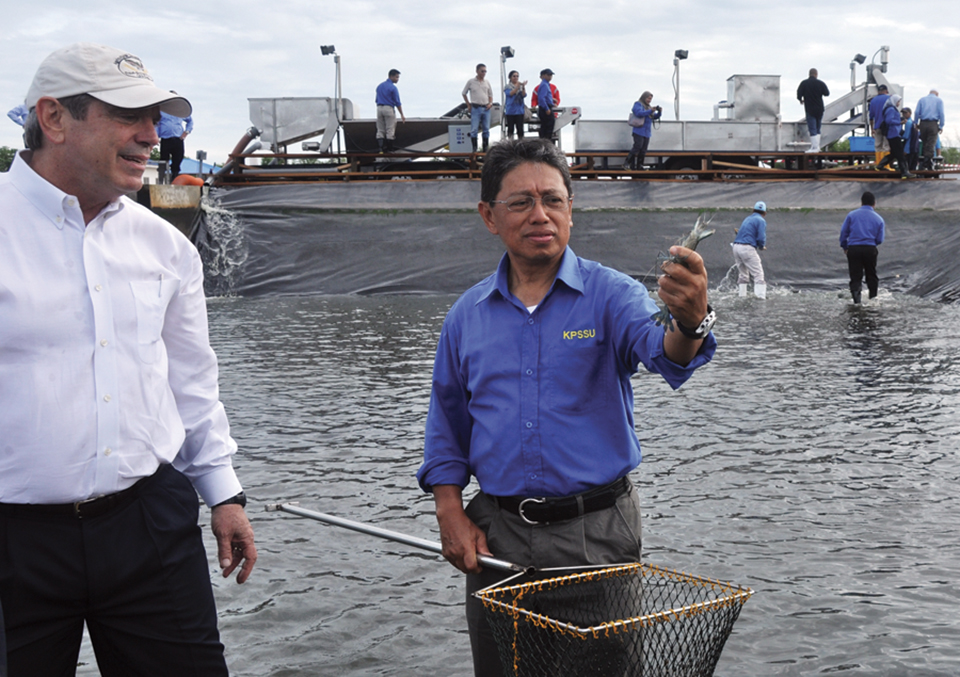
Health & Welfare
Brunei project develops technology for large black tiger shrimp production, part 1
A five-year project was undertaken in Brunei Darussalam to develop advanced technology for the production of large black tiger shrimp. A combination of technologies has enabled efficient production of large-sized black tiger shrimp, which could lead to a resurgence of this species in Asia.
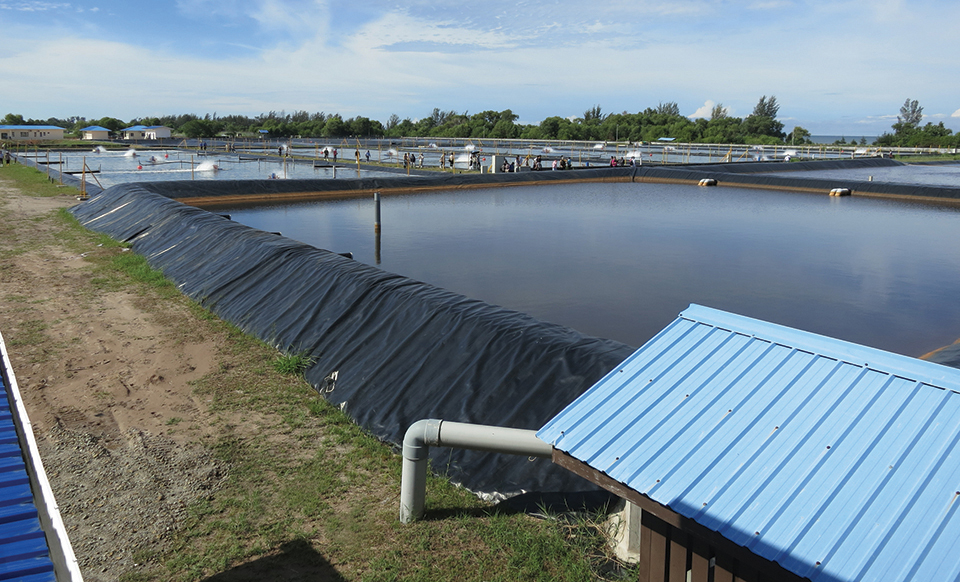
Health & Welfare
Brunei project develops technology for large black tiger shrimp production, part 5
The final article in a series about a project in Brunei to develop technology for production of black tiger shrimp focuses on the development of advanced grow-out ponds and practices with enhanced systems for biosecurity, sludge removal, water reuse, energy efficiency, automatic feeding and mechanical harvesting.
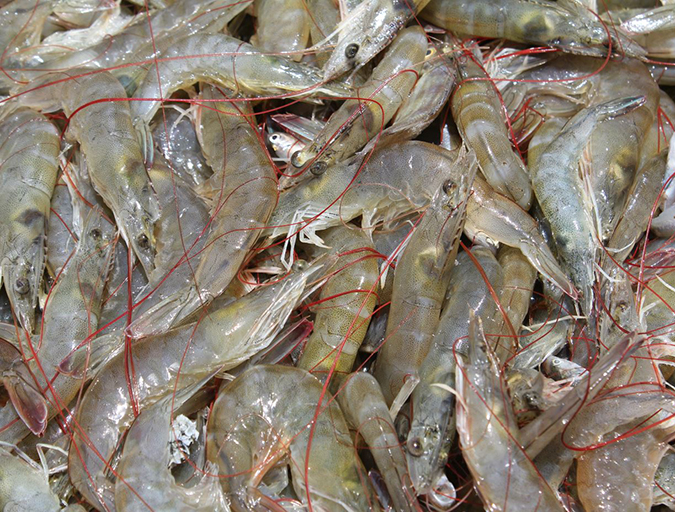
Intelligence
Critical decisions for shrimp harvesting and packing, Part 1
Harvesting a crop of shrimp is a critical step for any shrimp farming venture. Several months of efforts and resources to properly raise a quality crop have already been invested, and this quality must be preserved. The decision to harvest involves consideration of various factors.


